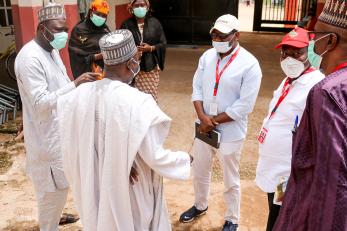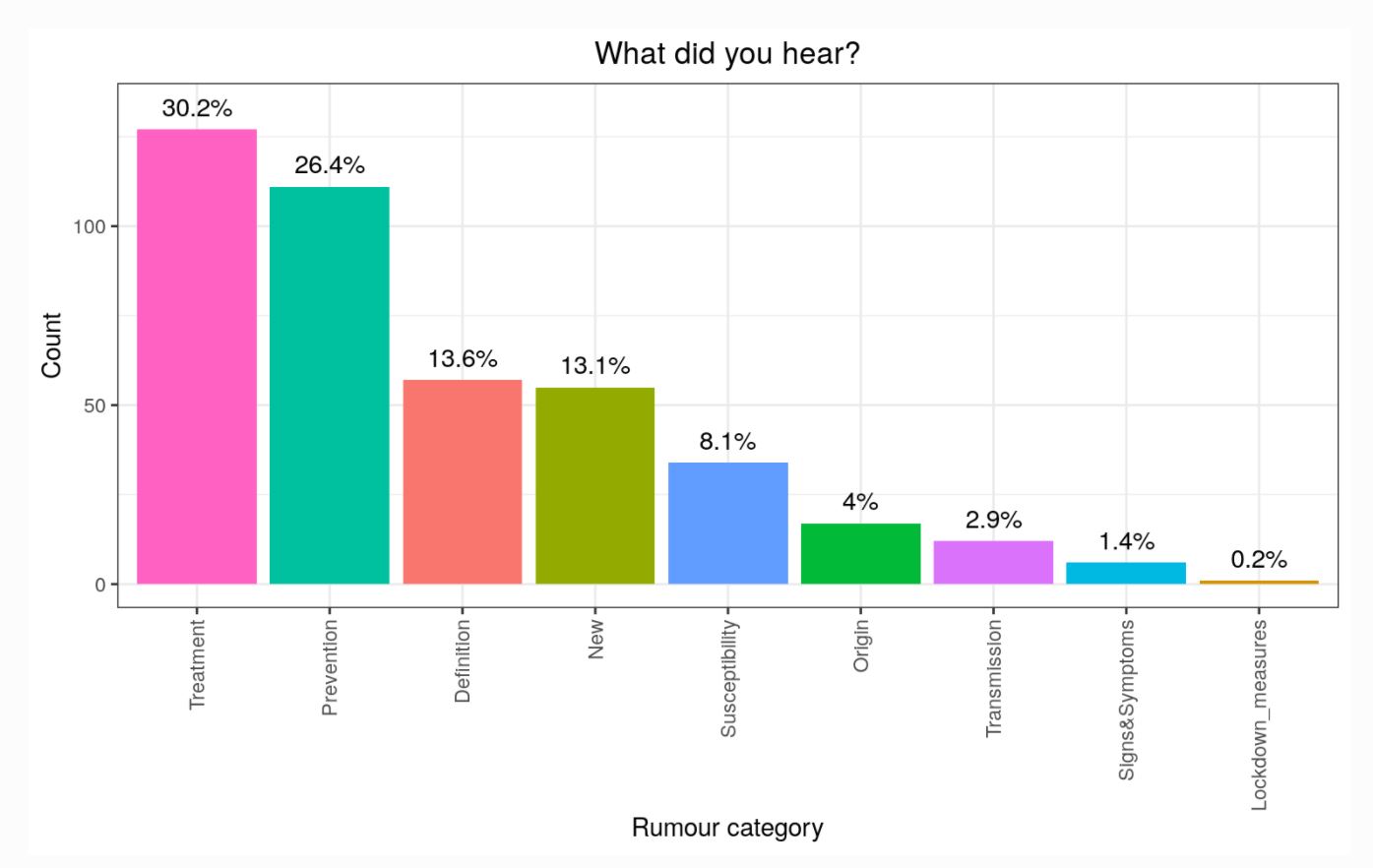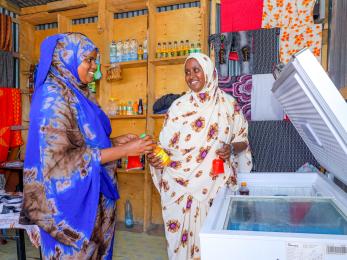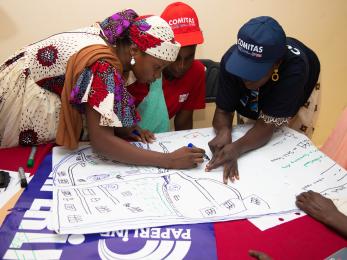Gaskiya COVID-19 Rumour Tracker
Findings from northeast Nigeria Pilot

Background
Borno State witnessed its first case of COVID‑19 on April 19, 2020, and has since experienced a dramatic escalation in the public health crisis. Although it only had 356 cases as of June 8, Borno has also witnessed 26 deaths from the virus, giving it an extremely high fatality rate of 7.3% and making it the third most affected state in Nigeria in terms of fatalities. The situation in Borno is highly precarious and ripe for rapid transmission, with 1.68 million internally displaced persons (IDP) living in camp settings and host communities across the state, where social distancing is not possible.
Similarly, poor nutrition and basic levels of health and sanitation undermine efforts to ensure proper handwashing and other sanitation measures. Finally, weak access to and poor quality of healthcare in Borno mean that the system, already battered by a decade of violent conflict, is incapable of addressing any significant outbreak of COVID‑19. Despite these risks, communities still do not believe that COVID‑19 is either real or deadly, and instead favour widespread rumours, myths, and conspiracy theories about the virus and fail to heed public health guidelines.
According to a listener assessment by a local radio station in May 2020, 96% of its listeners had heard COVID‑19 messaging on its station, but 45% still did not believe that COVID‑19 was ‘real or deadly.’ If communities in Borno State and the broader northeast region of Nigeria are hearing credible sensitisation messages, why do they still not believe in their veracity? And what sort of messaging would be more effective? Anecdotal evidence suggests that communities feel that they have no proof of COVID‑19, especially while violence perpetrated by armed opposition groups is still a daily and verifiable reality. Without tangible evidence of the virus, communities fall back on assumptions that the entire crisis has been manufactured by the government to enrich themselves at the expense of local communities. Meanwhile, the Borno State government, as well as international and local non-governmental organisation’s (NGO) are primarily responsible for disseminating COVID‑19 sensitisation messaging, but are also among the least trusted actors by local communities, thereby compromising the efficacy of risk communications campaigns.
Widespread belief in rumours and conspiracy theories has filled this gap in information from more credible actors. Communities are especially susceptible to misinformation because 64% of Nigerians inherently trust social media, with a particular reliance on WhatsApp, where audio messages can overcome barriers of illiteracy. Communities cite myths including that 5G networks can cause COVID‑19; that the government is dropping chemicals from a jet to spread the virus; that the virus can be cured by lemon, ginger, or garlic; and that the Nigerian immune system is too strong to succumb to the virus; among many others. These rumours continue to provoke suspicion of the government, incite intercommunal conflict and stigmatisation, and undermine vital attempts to protect vulnerable communities from COVID‑19. Unless questions about the pitfalls and opportunities for risk communications campaigns are answered, efforts to stymie the spread of the virus will remain ineffective, investments will be wasted, and fragile local relationships will be further undermined.
Solution Overview
The GASKIYA project (Hausa for ‘Truth’): Addressing COVID‑19 Myths through Technology, was a Mercy Corps pilot initiative to improve community-level behavioural change related to COVID‑19 prevention measures through strategic risk communications in Borno State of Nigeria. The Gaskiya project incorporated push SMS and IVR messages to intake rumour submissions from truth champions, translate and transcribe the rumours, tag and categorise them in, and send feedback to the community in partnership with Translators without Borders and Viamo. The project was broken into three parts:
- COVID‑19 Messaging Assessment – To kick off the project, we conducted a community-driven assessment of community access to COVID‑19 information, attitudes towards messaging content, messengers, and modalities for both factual and false information, and recommendations for improved campaigns. The results of the assessment in turn informed the design of subsequent myth tracking and messaging campaigns, and were shared with the Borno State Task Force on COVID‑19, media outlets, and the wider humanitarian community operating in northeast Nigeria.
- Myth Tracker Tool – In order to ensure that messaging continues to adapt and respond to new myths, the team continuously monitored how misinformation is spreading across Borno. We worked with Viamo to collect rumours through IVR, and send feedback related to those rumours, and Translators without Borders to support in the translation and qualitative analysis of the rumours to help identify the risk and impact of those rumors.
- Participatory Analysis and Reports – In addition to the digital dashboard, the team worked with Translators without Borders to produce an analysis report to synthesise information for stakeholders, as well as local communities themselves. The analytical process behind these reports will also serve as a critical community feedback loop to engage local structures in participatory analysis of trends emerging from the myth tracker tool, for more in-depth deliberation and proposal of recommendations for ongoing risk communications. The process was intended to also bolster community understanding of the dangers associated with COVID‑19 rumours and myths, which can also fuel community-based sensitisation initiatives being implemented under other Mercy Corps Nigeria programmes.
The project launched in August 2020, with 85 volunteer “Truth Champions” across six local government areas in Borno state reported rumours about COVID‑19 over several weeks in November and December 2020. Throughout the project period, the Truth Champions initiated a total of 810 calls and completed a total of 574 recordings.
Project Outcomes
Gaskiya centred on a user-faced rumour tracker, which is a SMS and voice-enabled tracker that local participants—“Truth Champions”—used to understand what rumors were prevalent in their communities. Mercy Corps contracted with Viamo and Translators Without Borders to build out an effective tool, and launched the collection of rumours beginning in November. Over the course of about a month, we “collected data and found that most rumours were centered on prevention and treatment of COVID‑19. While most of the rumors focused on herbal treatments, water-based efforts, and other natural remedies, there were a few rumours that emerged along existing conflict lines, especially between religious groups. We also asked about sources of rumours, and found that they closely mapped to the same sources of general information sharing tendencies.

In December, we brought together several groups of Truth Champions to further discuss the results of the rumour tracker. We firmly believe that simply collecting the information and providing basic feedback would not provide a deeper understanding of the rumour landscape. We wanted to better understand from the community why rumours might be “sticky” or have greater negative impact. We did not choose to ask about the rumours related to specific conflicts because we did not have enough time to adequately prepare to facilitate a more involved conversation, so we evaluated rumours about natural remedies and treatments as a first step. While probing on the rumours around herbal treatments, focus group participants said they felt that uneducated people believed this rumour more than others, and that herb sellers were spreading the rumor to boost sales.
In a narrative report of the rumor findings, we found several interesting considerations for future rumor tracking projects.
- Accurate information is often mixed in with rumours. For example, “We heard from the doctors that using face masks from morning to evening and use face mask you wouldn’t contact the virus, also that we pray five times a day, they said we cannot contact the virus.” Therefore, addressing rumours should be respectful of people’s beliefs, and provided through trusted sources of information.
- High risk rumours need to be addressed quickly, and are contextual. For example, “Peace be upon you, many people did not agree that the issue of COVID‑19 is real. They believe that it doesn’t exist in Maiduguri or Nigeria as a whole. It is meant to stop people from worshipping God, that was why we are allowed to go to the market but not allowed to go to mosque and church.” Rumors must be analysed based on the context, and in this case, religious divisions are often aligned with underlying conflict tensions, so the rumour posed a greater risk than others.
Lessons from Gaskiya
The design of Gaskiya, and the following lessons, drove forward how we think about Behaviour Change Communication at Mercy Corps. It wasn’t just about getting information out there, but to listen to the community and understand what they heard, how, and why certain pieces of information (whether true or rumours) were sticking. As COVID‑19 health messaging adapts to vaccine roll-out, this will be critically important, especially in higher risk/conflict contexts.
- Lesson on Rumour Collection: We spent a good amount of time thinking about how to collect rumours, and more specifically, who should be submitting the rumours. Due to the context and breadth of the geographies, we did not ask staff to collect information and submit what they heard. We wanted to hear directly from users. In this way, we probably received more diverse information, however, the data took a lot more cleaning despite training with the community leaders.
- Lesson on Balancing Speed for Tailored Responses: Despite our design to categorise rumors and respond to the submitters based on those categories, rumours continually changed and generic “preset” responses were not sufficient or contextually specific. The platform for triggering a response in this sense restricted that specific tailoring we would hope for.
- Lesson on Tech: Working with two technology partners, we had an opportunity to take advantage of both organisations’ skill sets. However, due to budget limitations, we were able to creatively adapt the tools to meet our needs, but we also added more steps that slowed the process.
- Lesson on Analysis: Focus funding on analysis, less on communications tech. In working with Viamo, we had the ability to collect information and trigger a response based on a light analysis. This was an incredible opportunity to tailor feedback in a near-automated way. However, a team member needed to be available to analyse and categorise a rumour for response.
Recommendations for Rumour Tracking Programmes
Recommendation: Critically analyse the information you might receive from different groups of people. All of these sources are valid and could have potential bias. Understand the source and implications of that source in the design.
Recommendation: Technology is expensive and people remain essential. It is important to invest time and budget in staffing of rumour tracking and monitoring because the critical part is the analysis, and that remains at the human level particularly to make it context-specific. Technology can help automate certain processes.
Recommendation: A rumour tracker must collect information to identify trends rapidly in order to respond efficiently and effectively. For risky rumours, teams must be ready to respond without waiting for more formal analysis, which may take longer and increase the risk or impact.


